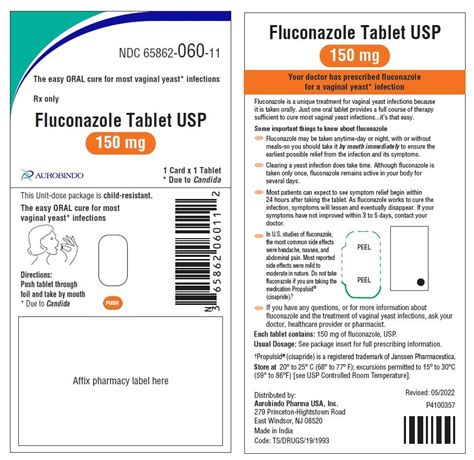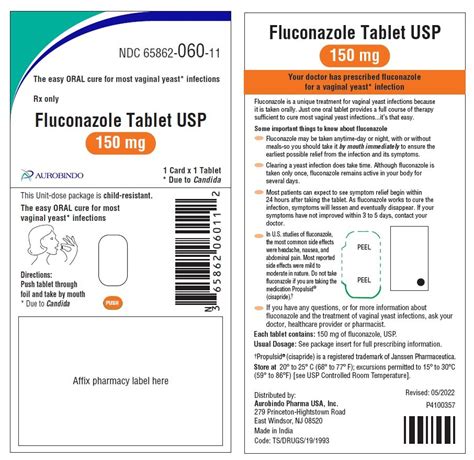Intro
Discover 7 fluconazole side effects, including liver damage, nausea, and allergic reactions, and learn how this antifungal medication can impact your health, with potential interactions and warnings for safe usage.
The importance of understanding the potential side effects of medications cannot be overstated, especially when it comes to widely used antifungal drugs like Fluconazole. This medication is commonly prescribed to treat various fungal infections, ranging from vaginal yeast infections to more serious conditions such as cryptococcal meningitis. Despite its effectiveness, Fluconazole, like all medications, can cause side effects that vary in severity and impact. It's crucial for patients to be aware of these potential side effects to ensure they can make informed decisions about their treatment and to recognize when they might need to seek medical attention.
Fluconazole's mechanism of action involves interfering with the production of ergosterol, a critical component of fungal cell membranes. By inhibiting this process, Fluconazole effectively disrupts the integrity of the fungal cell membrane, leading to cell death. While this action is targeted at fungal cells, it can also have unintended consequences on human cells, contributing to the development of side effects. The severity and likelihood of experiencing side effects can depend on several factors, including the dosage, duration of treatment, and individual patient characteristics.
Understanding the potential side effects of Fluconazole is not just about recognizing the risks; it's also about empowering patients to take an active role in their healthcare. By being informed, individuals can better manage their treatment, adhere to prescribed regimens, and communicate more effectively with their healthcare providers. This knowledge can also prompt discussions about alternative treatments or strategies to mitigate side effects, ultimately leading to more personalized and effective care.
Common Fluconazole Side Effects

Some of the most commonly reported side effects of Fluconazole include nausea, vomiting, diarrhea, and abdominal pain. These gastrointestinal symptoms can be uncomfortable and may affect patients' quality of life, especially if they are severe or persistent. Additionally, Fluconazole can cause changes in liver function tests, indicating potential liver damage, although this is less common. It's essential for patients to monitor their condition and report any significant changes or concerns to their healthcare provider.
Less Common but Serious Side Effects

While less frequent, there are more severe side effects associated with Fluconazole that require immediate medical attention. These include severe allergic reactions, such as anaphylaxis, and serious liver damage, which can be life-threatening. Patients should be vigilant for signs of these conditions, such as difficulty breathing, swelling of the face or throat, or severe abdominal pain, and seek emergency care if they occur.
Factors Influencing the Risk of Side Effects

The risk of experiencing side effects from Fluconazole can be influenced by several factors, including the patient's age, kidney function, and the presence of underlying medical conditions. Elderly patients and those with pre-existing liver or kidney disease may be more susceptible to certain side effects due to decreased drug clearance or increased sensitivity. Additionally, the concomitant use of other medications can interact with Fluconazole, either by enhancing its effects or increasing the risk of adverse reactions.
Managing and Preventing Side Effects

To manage and prevent side effects, patients should follow their prescribed treatment regimen closely and attend scheduled follow-up appointments. Maintaining open communication with healthcare providers is crucial, as they can offer guidance on managing side effects and adjust the treatment plan as necessary. In some cases, alternative antifungal medications or adjustments in dosage may be considered to minimize the risk of adverse effects.
Special Considerations

Certain populations, such as pregnant women and individuals with compromised immune systems, may require special consideration when taking Fluconazole. The potential benefits of the medication must be carefully weighed against the potential risks, and alternative treatments may be preferred in some cases. For example, Fluconazole is generally avoided during pregnancy, especially in the first trimester, due to the potential risk of birth defects.
Patient Education and Awareness

Educating patients about the potential side effects of Fluconazole and the importance of adherence to treatment is a critical aspect of healthcare. By being informed, patients can make better decisions about their care and work more effectively with their healthcare providers to manage their condition. This includes understanding the signs of serious side effects, the importance of follow-up appointments, and how to manage common side effects to improve their quality of life.
Conclusion and Future Directions

As research continues to advance our understanding of antifungal medications like Fluconazole, it's essential to consider the broader implications of these findings for patient care and public health. The development of new antifungal agents and the optimization of existing treatment regimens will be crucial in addressing the evolving landscape of fungal infections and resistance. By prioritizing patient-centered care, education, and communication, we can work towards improving outcomes and minimizing the impact of side effects for those treated with Fluconazole.
Final Thoughts

In conclusion, while Fluconazole is an effective treatment for various fungal infections, its potential side effects must be carefully considered and managed. By understanding the risks and benefits, patients and healthcare providers can work together to optimize treatment outcomes and improve the quality of life for those affected by fungal infections. As we look to the future, ongoing research and patient education will be pivotal in addressing the challenges posed by antifungal resistance and the side effects of medications like Fluconazole.
What are the most common side effects of Fluconazole?
+The most common side effects of Fluconazole include nausea, vomiting, diarrhea, and abdominal pain. These gastrointestinal symptoms can be uncomfortable but are generally manageable with supportive care.
Can Fluconazole cause serious liver damage?
+Yes, although rare, Fluconazole can cause serious liver damage. Patients should be monitored for signs of liver dysfunction, such as jaundice or severe abdominal pain, and report any concerns to their healthcare provider immediately.
How can I minimize the risk of side effects while taking Fluconazole?
+To minimize the risk of side effects, follow your prescribed treatment regimen closely, attend all scheduled follow-up appointments, and maintain open communication with your healthcare provider about any concerns or symptoms you experience.
We invite readers to share their experiences or questions about Fluconazole and its side effects in the comments below. Your insights can help others better understand the complexities of antifungal treatment and the importance of patient-centered care. Additionally, consider sharing this article with others who may benefit from this information, and let's work together to promote awareness and education about the safe and effective use of medications like Fluconazole.
